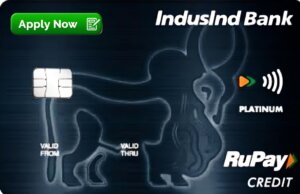
Introduction
The Federal Reserve System, often simply referred to as the Federal Reserve or “the Fed,” is the central bank of the United States. It plays a critical role in maintaining the stability and health of the U.S. economy. Established in 1913 in response to a series of financial panics, the Federal Reserve has evolved into a powerful institution tasked with overseeing monetary policy, supervising financial institutions, maintaining financial system stability, and providing banking services to the government and other institutions.
Despite being central to the functioning of the U.S. economy, the Federal Reserve is not always well understood by the general public. It operates independently within the government but is subject to oversight by Congress. Its decisions affect everything from interest rates and inflation to employment and the value of the dollar. This essay explores the origins, structure, functions, and influence of the Federal Reserve, and considers its challenges and future.
Origins and History
The Federal Reserve was created through the Federal Reserve Act of 1913, signed into law by President Woodrow Wilson. Its creation was a response to a long history of banking panics and a lack of central coordination in the American financial system. One particularly severe panic in 1907 revealed the vulnerabilities of the banking sector, leading to widespread calls for reform.
Prior to the establishment of the Federal Reserve, the U.S. had experimented with two central banks: the First Bank of the United States (1791–1811) and the Second Bank of the United States (1816–1836). Both institutions were controversial and ultimately failed due to political opposition and skepticism about centralized financial power. For much of the 19th century, the U.S. lacked a formal central bank, relying instead on private banks and ad hoc responses to crises.
The Federal Reserve was created to bring greater stability, flexibility, and control to the monetary system. Its initial mandate was to furnish an elastic currency, provide liquidity in times of stress, and improve the supervision of banking institutions. Over time, the Fed’s responsibilities expanded dramatically, particularly during the Great Depression, World War II, and the inflationary period of the 1970s.
Structure of the Federal Reserve
The Federal Reserve System is unique among central banks due to its decentralized structure, which includes both public and private elements. It consists of three main components:
-
The Board of Governors
Located in Washington, D.C., the Board of Governors is the central governing body of the Federal Reserve. It consists of seven members appointed by the President and confirmed by the Senate. Each serves a 14-year term to ensure political independence. The Chair of the Board is the most visible representative of the Fed and is appointed for a four-year term. -
Twelve Regional Federal Reserve Banks
These banks are distributed across major cities in the United States, including New York, Chicago, San Francisco, and others. Each serves a specific district and acts as the operational arm of the Federal Reserve. These regional banks are quasi-public institutions: they are owned by member banks in their districts but operate under the oversight of the Board of Governors. -
The Federal Open Market Committee (FOMC)
The FOMC is responsible for open market operations—the main tool used to conduct monetary policy. It comprises the seven Board members and five of the twelve Reserve Bank presidents, who serve on a rotating basis. The President of the New York Fed is a permanent member due to the bank’s central role in executing monetary policy.
This structure is designed to balance public oversight and regional input, ensuring that the interests of different parts of the country are represented in national monetary policy decisions.

Core Functions of the Federal Reserve
The Federal Reserve’s mission is broadly defined by four main functions:
1. Conducting Monetary Policy
The Fed’s most important and widely known responsibility is to manage the nation’s monetary policy to promote maximum employment, stable prices, and moderate long-term interest rates. These objectives are commonly referred to as the Fed’s “dual mandate.”
To achieve these goals, the Fed uses several tools:
-
Open Market Operations (OMO): Buying and selling U.S. Treasury securities in the open market to influence short-term interest rates and the money supply.
-
Discount Rate: The interest rate charged to commercial banks for borrowing funds from the Federal Reserve’s discount window.
-
Reserve Requirements: Regulations on the minimum reserves each bank must hold to back deposits.
-
Interest on Reserve Balances (IORB): The interest rate the Fed pays banks on the excess reserves they hold at the Federal Reserve.
Through these tools, the Fed influences borrowing, spending, and investment throughout the economy.
2. Supervising and Regulating Banks
The Federal Reserve supervises and regulates a variety of financial institutions to ensure the safety and soundness of the nation’s banking system and to protect consumers’ credit rights. It oversees:
-
Bank Holding Companies
-
State-chartered banks that are members of the Federal Reserve System
-
Foreign banking organizations operating in the U.S.
The Fed also enforces consumer protection laws and works to prevent risky financial practices that could lead to systemic collapse, as seen during the 2008 financial crisis.
3. Maintaining Financial System Stability
Another critical function is to maintain the stability of the financial system and contain systemic risk that may arise in financial markets. The Fed monitors financial institutions and markets for vulnerabilities, coordinates with other federal and international regulators, and can act as a lender of last resort during periods of severe stress.
In times of crisis—such as during the COVID-19 pandemic or the 2008 financial crisis—the Fed may deploy emergency lending facilities to stabilize the financial system.
4. Providing Financial Services
The Federal Reserve acts as a bank for banks and a bank for the U.S. government. It processes payments, distributes currency and coin, and facilitates electronic payments through systems like Fedwire and the Automated Clearing House (ACH). It also issues and redeems U.S. government securities and manages the Treasury’s General Account.
Independence and Accountability
One of the distinguishing characteristics of the Federal Reserve is its independence from political influence, which is considered essential for effective monetary policy. While the Fed is part of the federal government, it does not require congressional approval for its policy decisions and does not receive funding through the regular budget process. Instead, it is self-funded primarily through interest on government securities it holds.
However, the Fed is also subject to congressional oversight. It is required to report regularly to Congress and publishes detailed records of its meetings and policy decisions. The Chair of the Federal Reserve testifies semi-annually before Congress on the state of the economy and the Fed’s actions.
This balance between independence and accountability aims to protect the Fed from short-term political pressures while ensuring it remains answerable to the public.

The Federal Reserve in Practice: Key Historical Moments
The Great Depression
During the 1930s, the Fed was criticized for failing to prevent the collapse of the banking system. Scholars such as Milton Friedman argued that the Fed’s tight monetary policy worsened the Depression. As a result, reforms in the following decades expanded the Fed’s mandate and improved its tools for responding to crises.
The 1970s Inflation Crisis
The U.S. experienced high inflation during the 1970s. In response, the Fed, under Chairman Paul Volcker, implemented aggressive interest rate hikes. These moves caused a recession but ultimately tamed inflation and reasserted the Fed’s credibility.
The 2008 Financial Crisis
The global financial crisis marked one of the most significant tests for the Federal Reserve. It responded by lowering interest rates to near-zero and launching unprecedented programs like quantitative easing (QE)—purchasing large-scale assets to inject liquidity into the financial system. These actions helped prevent a deeper recession, though they also sparked debate about the limits of central bank intervention.
The COVID-19 Pandemic
In 2020, the Fed acted swiftly to stabilize financial markets and support the economy during the COVID-19 crisis. It reintroduced QE, slashed interest rates, and launched emergency lending programs. The Fed also collaborated closely with the Treasury Department to implement aspects of the CARES Act.
Current Challenges and Criticisms
While the Federal Reserve remains a pillar of the U.S. financial system, it faces several ongoing challenges:
-
Inflation and Interest Rates: Following the pandemic, inflation surged in 2021 and 2022, forcing the Fed to rapidly raise interest rates. Critics argue that the Fed was too slow to respond and now risks triggering a recession.
-
Balancing Mandates: The Fed must balance sometimes conflicting goals of price stability and maximum employment. Tighter monetary policy to fight inflation can slow job growth.
-
Financial Regulation: Some argue that the Fed’s regulatory oversight failed to prevent risky behavior by banks and investment firms. Others believe the Fed overregulates and stifles economic growth.
-
Climate Change and Inequality: There are growing calls for the Fed to consider environmental and social factors in its policies, but doing so raises questions about its proper role.
-
Digital Currencies and Innovation: As cryptocurrencies and digital payment systems grow, the Fed is exploring the idea of a central bank digital currency (CBDC). This represents a major shift in how money might be issued and used in the future.

Conclusion
The Federal Reserve is one of the most influential institutions in the world, central to the operation of the U.S. economy and the global financial system. Its responsibilities—ranging from monetary policy to bank supervision—affect every American, often in ways that are not immediately visible.
Over more than a century, the Fed has adapted to meet the needs of a changing economy, learning from crises and refining its tools. While it is not without criticism, its role as a stabilizing force is widely recognized. As the economy continues to evolve—driven by technology, globalization, and demographic change—the Federal Reserve will need to navigate new challenges while remaining true to its core mission: fostering a healthy and stable economy.